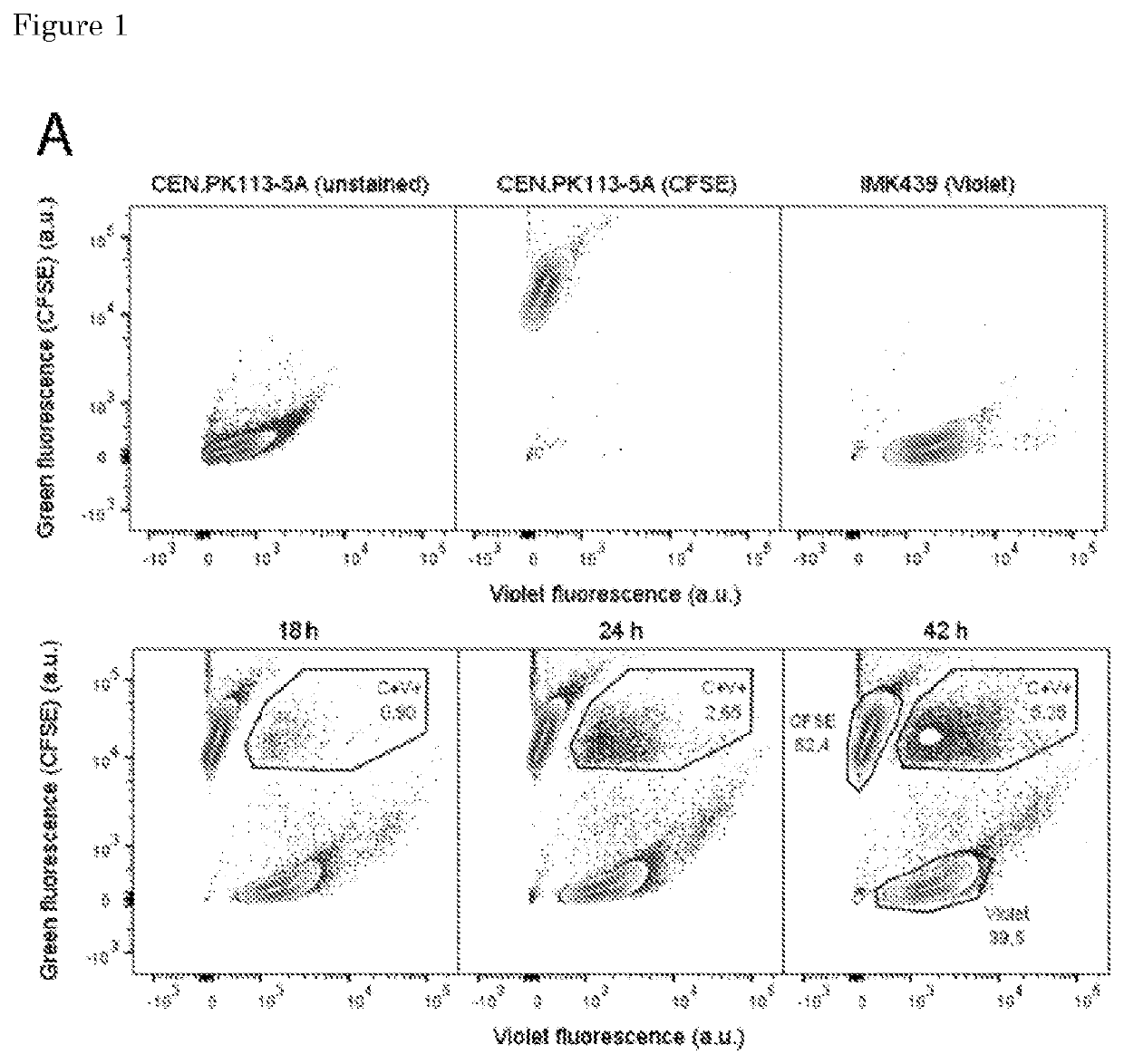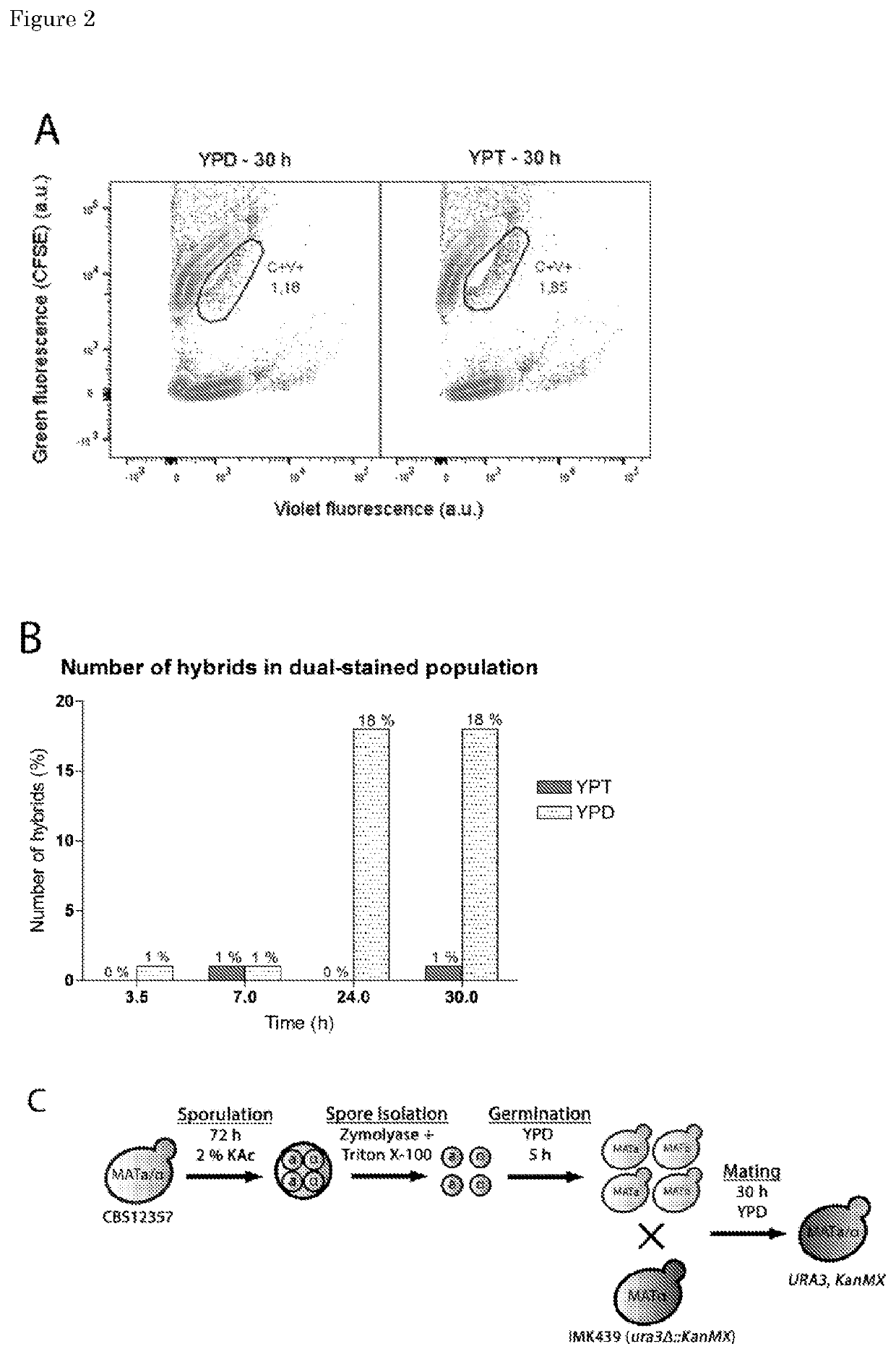Identification of rare products of crossing organisms
a technology of rare products and cross-recognition, which is applied in the field of identification of rare products of crossing organisms, can solve the problems of difficult to predict the phenotype of an outcross, time-consuming process, and difficult to isolate the desired hybrid, and achieve the effect of dramatically improving the labeling of gametes, especially haploid spores
- Summary
- Abstract
- Description
- Claims
- Application Information
AI Technical Summary
Benefits of technology
Problems solved by technology
Method used
Image
Examples
example 1
Materials and Methods
[0069]Strains, Media and Cultivation
[0070]The S. cerevisiae and S. eubayanus strains used in this study are listed in Table 1. Strains were routinely grown in complex medium (YP), containing 10 g L−1 yeast extract and 20 g L−1 peptone supplemented with 20 g L−1 glucose for YPD and with 20 g L−1 trehalose for YPT. Synthetic medium (SM) containing 20 g L−1 glucose, 3 g L−1 KH2PO4, 5.0 g L−1 (NH4)2SO4, 0.5 g L−1 MgSO4.7 H2O, 1 mL L−1 of a trace element solution and 1 mL L−1 of a vitamin solution, was prepared as described previously [Verduyn et al., 1992. Yeast 8: 501-517], and the pH was set to 6.0 using 2 M KOH. Selection for the KanMX marker was performed in SM+G418, which corresponds to SM medium supplemented with 0.2 g L−1 of G418 (Invitrogen, Carlsbad, Calif., USA) in which (NH4)2SO4 was replaced by 1 g L−1 monosodium glutamate as ammonium sulfate impedes G418 [Cheng et al., 2000. Nucleic Acids Res 28: e108-e108]. For solid media, 20 g L−1 agar was added to m...
PUM
| Property | Measurement | Unit |
|---|---|---|
| Temperature | aaaaa | aaaaa |
| Volume | aaaaa | aaaaa |
| Volume | aaaaa | aaaaa |
Abstract
Description
Claims
Application Information
 Login to view more
Login to view more - R&D Engineer
- R&D Manager
- IP Professional
- Industry Leading Data Capabilities
- Powerful AI technology
- Patent DNA Extraction
Browse by: Latest US Patents, China's latest patents, Technical Efficacy Thesaurus, Application Domain, Technology Topic.
© 2024 PatSnap. All rights reserved.Legal|Privacy policy|Modern Slavery Act Transparency Statement|Sitemap



